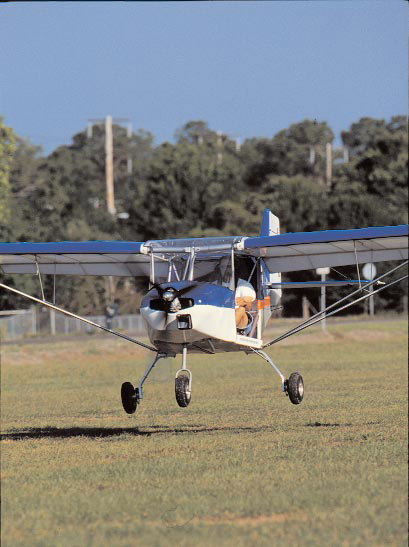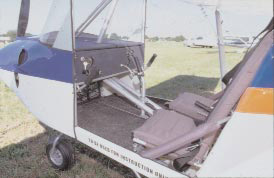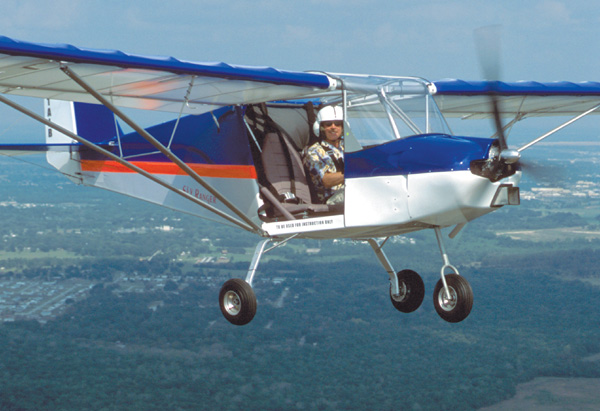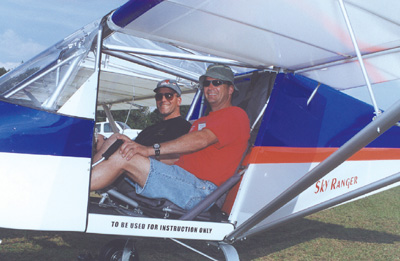
The Leading Trainer in French Flight Schools To many observers, the Sky Ranger looks like a RANS Coyote. Based on general appearances, it appears the French light plane borrowed heavily from the popular model sold by the Kansas light plane kit leader. But, Sky Ranger importer Richard Helm bristles a bit when he hears that statement and retorts, “People compare the Sky Ranger to the RANS Coyote. They say it’s a knockoff, but the French designer didn’t take anything from the Coyote. It’s built completely different,” although he admits, “It does look a lot like the Coyote.” Give a Yankee welcome to the Sky Ranger. The French-designed ultralight is typical of a trend I think we’ll be seeing with increasing frequency—imported light planes from Europe. Sky Ranger is built in the Ukraine by Aeros, Ltd. I visited this factory with Phil Lockwood of Lockwood Aviation in the spring of 2001. Once built by Synairgy in France, Sky Ranger production moved to this former eastern-block country in 1997.



















